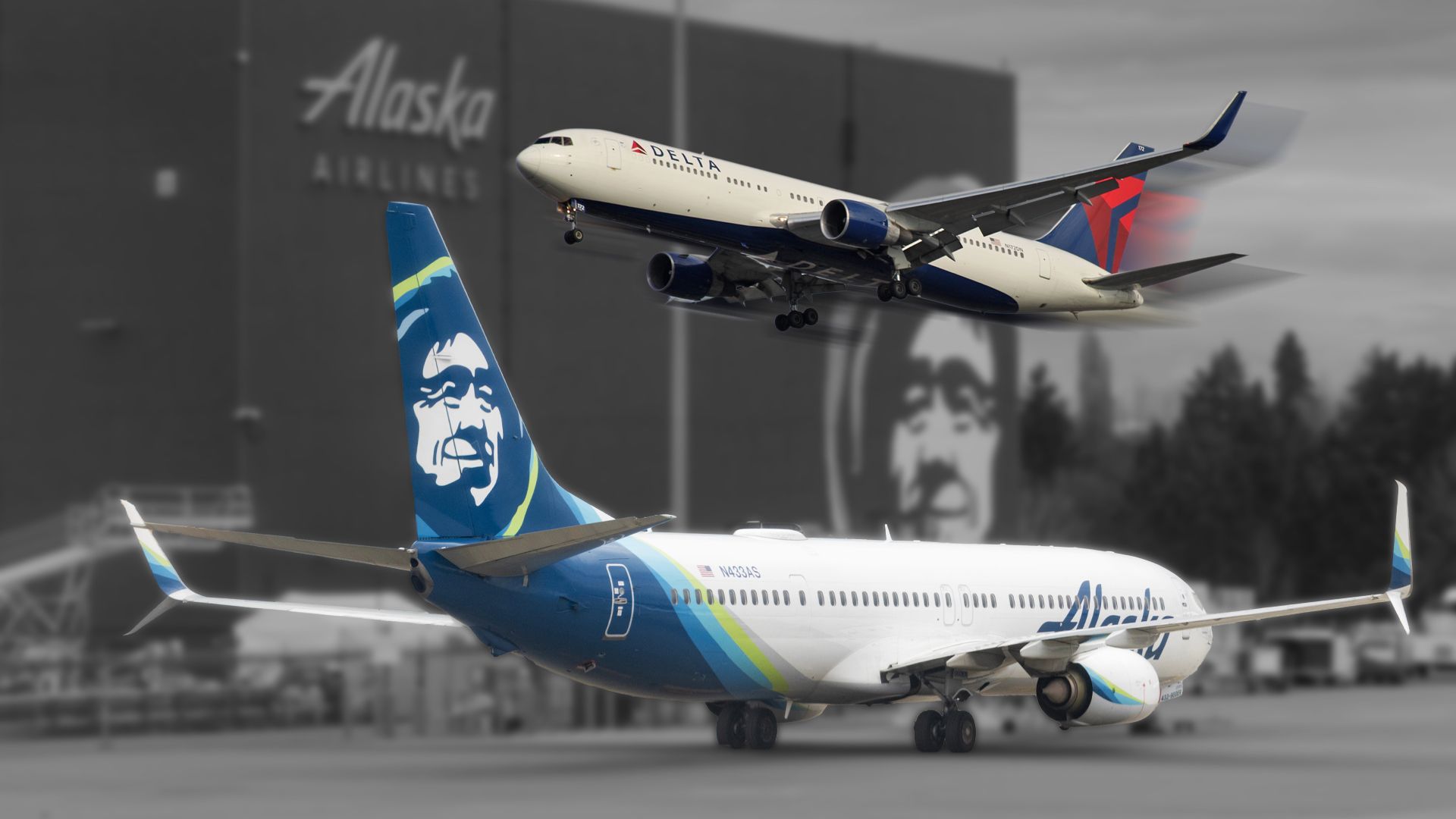World
Seattle Airlines Clash: Delta and Alaska Vie for Dominance

Seattle-Tacoma International Airport (SEA) is now the battleground for fierce competition between two major airlines: Alaska Airlines and Delta Air Lines. Since establishing SEA as a key hub in 2014, Delta has significantly expanded its operations, more than doubling its departures and enhancing its international reach across Asia and Europe. In response, Alaska Airlines is ramping up its services, particularly in long-haul flights, aiming to reclaim its dominance in its home market.
Delta’s strategy in Seattle has been to establish a robust network, focusing on premium services and international destinations. The airline has introduced new routes, including direct flights to Barcelona, and has invested in luxurious lounges to cater to corporate travelers. This approach not only solidifies Delta’s position as a leader in the premium travel segment but also sets the stage for a significant rivalry with Alaska Airlines.
Infrastructure Enhancements at SEA
Seattle-Tacoma International Airport has undergone substantial upgrades, most notably the 450,000-square-foot International Arrivals Facility, which opened in April 2022. This modern facility enhances the airport’s capacity and efficiency for international travelers, crucial for both Alaska Airlines and Delta Air Lines as they expand their services. The facility includes a new Grand Hall that streamlines customs and immigration processes, making it easier for passengers to connect through the airport.
As the two airlines compete for market share, improvements at SEA could benefit travelers through enhanced services and competitive pricing.
Alaska Airlines, recognized as the primary carrier at SEA, has historically dominated the local market with a loyal customer base and more departures than its competitors. Nonetheless, its previous lack of long-haul flights posed a challenge. The airline’s acquisition of Hawaiian Airlines has allowed it to introduce new international routes. Starting in 2025, Alaska plans to launch nonstop flights to major European destinations, including London Heathrow (LHR), Reykjavik (KEF), and Rome (FCO).
Delta’s Strategic Moves
Delta Air Lines has made significant investments in its Seattle operations since declaring the airport a major hub. The airline aims to grow its presence in long-haul markets while maintaining its established reputation for premium service. This includes the addition of new lounges and the implementation of fleet-wide Wi-Fi, catering to high-demand travelers who prioritize connectivity.
Delta’s competitive edge lies in its extensive route network and the premium travel experience it offers. With a market share of 19.82% at SEA, the airline is focused on expanding its international offerings in response to Alaska’s new long-haul services. The airline’s leadership remains confident, emphasizing its intention to protect and grow its connectivity from Seattle.
The competition at SEA is not merely about market share; it reflects broader trends in the aviation industry. Both airlines are vying to capture lucrative contracts from the tech sector and improve yield on premium services.
As Alaska Airlines prepares to enhance its long-haul capabilities, the airline faces significant execution challenges. Upgrading its fleet, introducing premium lounges, and providing advanced in-flight technologies like Starlink Wi-Fi will require substantial investment. These upgrades are essential to attract premium travelers and expand Alaska’s revenue potential.
Conversely, Delta is under pressure to maintain its competitive position and leverage its extensive network outside Seattle. The airline’s ability to respond swiftly to Alaska’s expansion plans highlights its commitment to remain a dominant player in the region. However, Delta’s economic performance in its economy class segments has been less robust, a potential vulnerability as it competes with Alaska’s growing appeal.
In summary, the competition between Alaska Airlines and Delta Air Lines at Seattle-Tacoma International Airport is intensifying. Both airlines are preparing for a significant clash as they aim to bolster their long-haul services and enhance their market positions. The outcome of this rivalry will not only influence the carriers’ financial performance but also shape the travel experience for passengers in the Pacific Northwest.
-

 Science2 months ago
Science2 months agoToyoake City Proposes Daily Two-Hour Smartphone Use Limit
-

 Health2 months ago
Health2 months agoB.C. Review Reveals Urgent Need for Rare-Disease Drug Reforms
-

 Top Stories2 months ago
Top Stories2 months agoPedestrian Fatally Injured in Esquimalt Collision on August 14
-

 Technology2 months ago
Technology2 months agoDark Adventure Game “Bye Sweet Carole” Set for October Release
-

 World2 months ago
World2 months agoJimmy Lai’s Defense Challenges Charges Under National Security Law
-

 Technology2 months ago
Technology2 months agoKonami Revives Iconic Metal Gear Solid Delta Ahead of Release
-

 Technology2 months ago
Technology2 months agoSnapmaker U1 Color 3D Printer Redefines Speed and Sustainability
-

 Technology2 months ago
Technology2 months agoAION Folding Knife: Redefining EDC Design with Premium Materials
-

 Technology2 months ago
Technology2 months agoSolve Today’s Wordle Challenge: Hints and Answer for August 19
-

 Business2 months ago
Business2 months agoGordon Murray Automotive Unveils S1 LM and Le Mans GTR at Monterey
-

 Lifestyle2 months ago
Lifestyle2 months agoVictoria’s Pop-Up Shop Shines Light on B.C.’s Wolf Cull
-

 Technology2 months ago
Technology2 months agoApple Expands Self-Service Repair Program to Canada









